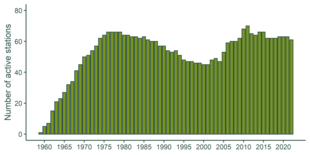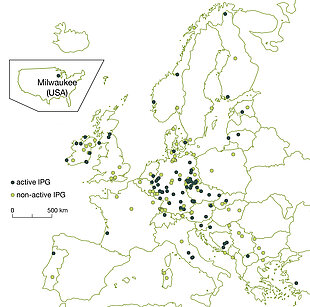The network of the International Phenological Gardens (IPG) along with its Global Phenological Monitoring programme (GPM) is a European and independent institution within the Phenology Commission of the International Society of Biometeorology (ISB).
The IPGs were established to collect comparable phenological data across Europe. Genetically identical trees and shrubs are planted in each IPG. This allows the analysis of phenological development, excluding the variability of different genetics. This allows for better determination of the effects of environmental factors such as temperature, precipitation, and photoperiod on phenological events, which is important for understanding ecosystem response to environmental change.
The IPG monitoring program focuses on examining the potential effects of climate change on tree species that are important to our forest ecosystems and integrates 26 plant species, some of which with different origins. With the inclusion of the GPM programme, 16 economically relevant fruit trees and ornamental shrubs were added. Currently (2024), 73 active IPGs from 20 countries contribute to the network. More information about the species and phases observed can be found here.
Phenological networks have several scientific goals, including monitoring environmental changes, detecting climate impacts, developing phenological models/maps, or comparing with remote sensing data. This is related to understanding how ecosystems respond to environmental change, which can have important implications for management decisions and policy making.
The main added value of the IPG network is that it allows for standardised observations that exclude genetic variability, thus improving comparability between different locations and time periods. Standardising observations can ensure that the data collected is consistent, making it easier to identify patterns and trends over time.

Distribution of IPG stations (2024) monitoring either IPG or GPM plants or both.
Dark green: active locations, light green: currently inactive locations.
There is only one station outside Europe that is currently active in the network. Non-active stations outside Europe are not shown on this map (e.g. in Asia).
Data basis: Eurostat.



